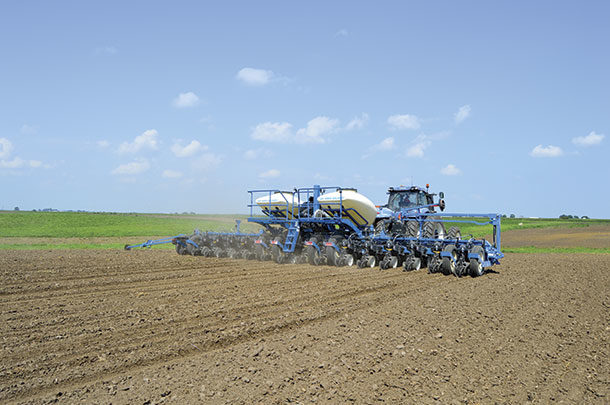Don’t forget, however, to do the maintenance you can’t see. In addition to visible mechanical issues, like fixing chains or replacing worn parts, it’s just as important to check the electronics and other technology on today’s planters.
The planter control systems have a direct impact on your productivity and the bottom line, just like the nuts-and-bolts mechanical parts. No matter how much technology is added to a planter, it is still the operator’s responsibility to verify that the seed monitor and control systems are working properly.
There are three basic areas to check to confirm your electronic systems are running properly: monitor display operation, display data/software and the planter control components.
Start in the cab by plugging in the display and turning it on. Take time to inspect things like the main power connections and relays, harness routings through doors and windows, and GPS connections. Scroll through the different operation screens to make sure all of the sensors and modules register on the display as they should.
Next, check to be certain you are running the latest version of the software in your display. Most monitor manufacturers provide a list of their current software on their website.* Software updates often become available more than once a year. Staying up-to-date provides operator solutions that may apply to more than just the planting season.
What about the information or applied data that is still in the monitor’s memory from last season? Be sure to make a copy and purge unnecessary files from the monitor.
Eliminating out-of-date field information can help avoid confusion when navigating through the display later as well as prevent excess data from slowing down your monitor. Now is the time to enter the latest data, such as new seed variety numbers, field changes or implement information.
Finally, remember to inspect the planter components. Carefully follow the wiring harness routing from hitch pin to seed tube. Focus on any areas that move when the machine is folded and around the row unit chains and parallel arms. Be sure to add new tie straps or guarding where necessary. The culmination of this process should be a full function system check.
Planter testing
Cold winter conditions shouldn’t prevent you from testing your planter electronics. All of the technology can be fully tested in the workshop. For example, planters equipped with a hydraulic drive should be run in the shop, allowing you to verify the row unit clutches and sectional controls are working as they should.
For planters with electronic drive, make sure the batteries are fully charged, the same as you would for the combine.
Follow up with a field test when conditions permit. Plan to conduct a true 1/1,000th-acre field check after making any settings or adjustments to the planter. The extra 15 minutes it takes to dig up those seeds is an inexpensive insurance policy.
Mechanical check
Consistent planter performance also requires all mechanical parts are in good working condition. Basic maintenance should include:
- Inspect soil-engaging components on the row units. Badly worn parts must be replaced or planter efficiency will be impaired.
- Check disc opener blades. Check the wear on disc blades and replace 15-inch blades when they are worn to 14.5 inches in diameter. Inspect the disc blade contact, too. Optimal disc blade contact is 1 to 1.5 inches to form the seed trench.
- Take a look at the inner scraper. Be sure it protects the seed tube to prevent soil buildup between the opener blades. Replace scrapers when they are worn to 5/8 of an inch or less.
- Inspect gauge wheels, checking for light contact of the tire to blade in the operating position.
- Assess closing wheel performance. The closing wheels must be centered over the seed trench. Apply only enough down pressure to maintain good seed-to-soil contact.
- Adjust hitch for consistent seed depth, spacing and seed-to-soil contact. Also, on the planter’s parallel arms, check the bolts, bushings, down-pressure springs and the drive chains to be sure all parts are performing optimally.
Be sure to check your planter operator’s manual for a full listing of maintenance requirements. Following these recommendations will help ensure your planter mechanical and electronics systems operate at peak efficiency this spring. ![]()
PHOTO: As you perform regular maintenance on your planter, don’t forget the software updates. Photo courtesy of Kinze Manufacturing.
(*For Kinze planter models, new software versions are available at no cost on the Kinze website, including instructions for making the updates.)
Phil Jennings is a service manager for Kinze Manufacturing











